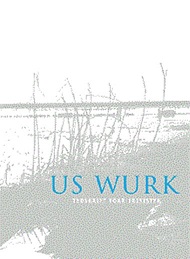Ig-tiidwurden en g-tiidwurden
Abstract
This study discusses the relationship between ig-verbs (e.g. sinnigje 'like') and g-verbs (e.g. priizgje 'praise') in West Frisian. These two types of verb have sometimes been lumped together in literature. This is not surprising considering the fact that they show some remarkable similarities (both have an original stem ending in a dental consonant) and are easily mixed up (ig is, for example, reduced to g occasionally). Nevertheless, it will be argued that a distinctionshould be made between ig-verbs and g-verbs, at least from a diachronic point of view.
The ig-element will be analysed as an augment (a syntactically and semantically void morpheme), that is attached to verbs formed by conversion. For the fact that ig is only added to verbs with a stem ending in a dental consonant, a functional explanation is suggested: the igaugment serves to separate the verbal stem and the inflectional endings (which often have an initial dental consonant), thus preserving morphological transparency. Whereas ig-verbs occur in most West Germanic languages and date back to the late Middle Ages, g-verbs are confined to West Frisian and are relatively young. They are first found in the
work of the Renaissance poet Gysbert Japiks (1603-1666). Moreover, whereas insertion of ig is basically a morphological phenomenon, g-insertion is purely phonologically motivated. It is shown that the g-element can result from three different phonological processes: affricatisation, assimilation and velarisation. It is hypothesised that the g-verbs and some other phenomena in Gysbert Japiks' work are indicative of a strong palatalising effect of the verbal ending -je in his
days.
The g-verbs that are found in Frisian after Gysbert Japiks, reflect only partly a natural (i.e. a phonological) development. Many of them are the result of Gysbert Japiks imitation and analogy formation. Yet, g-verbs have kept a certain popularity in the written language because of their stylistic heaviness (as compared to the g-less forms in the spoken language) and because of the
fact that they were considered as more typically 'Frisian' (compared to their g-less equivalents in Dutch).

